Media | Articles
Your handy glossary for Chevy’s Z-code cars
Of course, Datsun and Nissan have dibs on the Z-Car moniker—we’re not arguing that. But Chevy was actually there first. The original Datsun 240Z didn’t arrive until 1970, while Chevy’s first Z-Cars, the Z11 427-powered Impalas and Z06 Corvette had become legends seven years earlier.
Truth is, by the time Mr. K finally got his sports car, Chevy had already brought a long list of legendary Z-Cars to market, including the Z16 Chevelle, ZL1 Corvette, and the most famous of them all, the Z/28 Camaro.
Chevy’s RPO, or regular production order, options all have an alphanumeric code. Many since 1963 have begun with the letter Z. The letter doesn’t mean or stand for anything, and it has been used for hundreds of options over the decades, both big and small, as have most of the alphabet and many numbers.
The cowl induction hood on a 1969 Camaro for instance, was option code ZL2, while the Rally Sport option was Z22 and the Auxiliary Interior Lighting Group was code ZJ9. But a Z code has also been used for many of Chevy’s iconic performance packages and high-performance engines over the years. And that’s still the case today. They’re some of the hottest Chevys ever offered to the public over the last 57 years.
Here are Chevy’s most iconic Z-Cars in chronological order:
Marketplace
Buy and sell classics with confidence
1963 Chevy Impala SS Z11
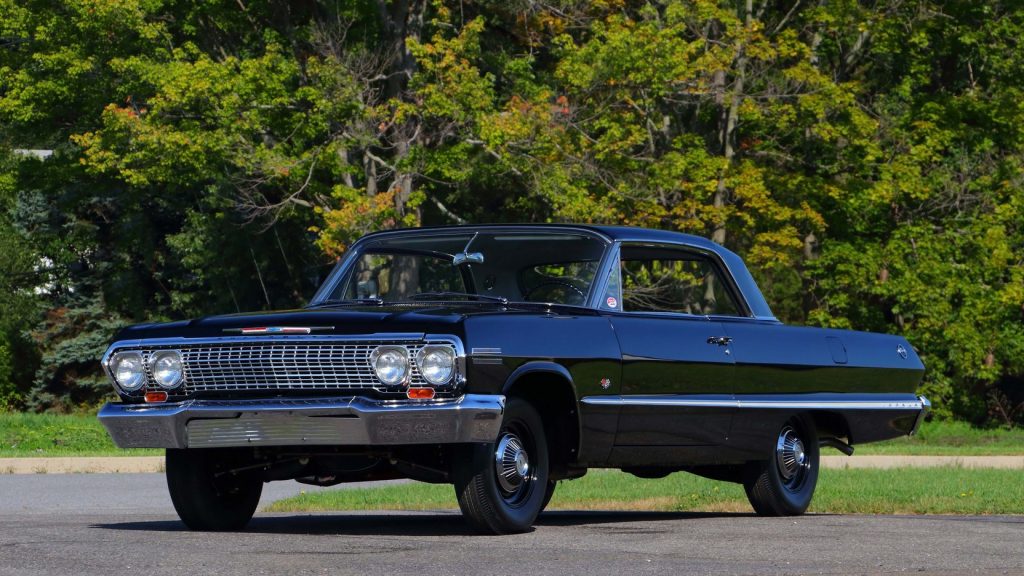
Introduced in December 1962, the Z11 just squeezed in before GM’s racing ban and would go on to become a drag racing legend in the hands of drivers like Don Nicholson, Ronnie Sox, and Dave Strickler. A factory lightweight with an aluminum front end to save weight, the cars were all hardtops and built without radios, sound deadening material, and front sway bars. They weighed a few hundred pounds less than a full production Impala SS, and their batteries were moved to the trunk to further help weight transfer and traction.
Their brakes were larger three-inch-wide finned drums with metallic linings and air scoops. Under the hood was a stroked 409 displacing 427 cubic inches. The W-series V-8 was underrated at 430 horsepower at 6000 rpm and 435 lb-ft at 3600 rpm and featured forged connecting rods, a 13.5:1 compression ratio, big port heads with massive 2.19/1.72-inch valves, a nasty cam with 325-degrees duration and .556-inch lift, an aluminum intake manifold, two Carter AFB carbs, an aluminum water pump, and a deep sump oil pan. All 57 were built with Borg Warner T10 four-speeds.
Running low 12-second quarter mile times, these cars were immediate winners. At the 1963 Nationals at Indy that year, Strickler beat Sox in another Z11 to take the AF/X class and then outran the Super Duty Catalina driven by Jim Wangers to take the Little Eliminator honor.
Interestingly, Chevy often reused its option codes, and Z11 was also the code for the 1969 Camaro Indy Pace Car convertibles.
1963 Chevy Corvette Z06
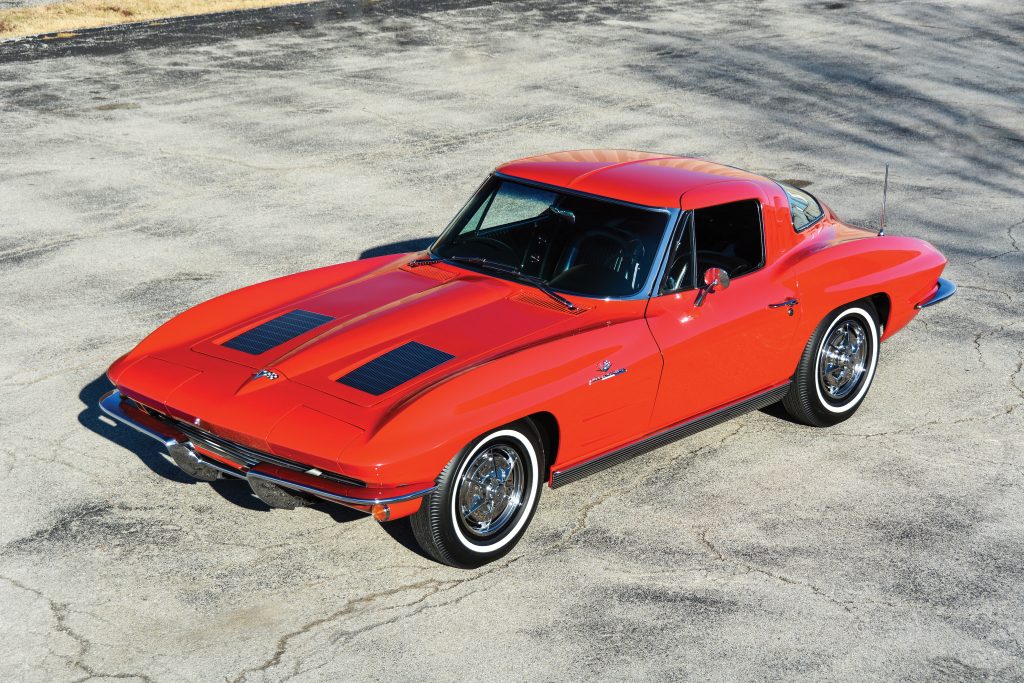
That same year, Corvette chief engineer Zora Arkus-Duntov dreamed up a special performance package for the new Corvette Stingray. The Z06 was born. Designed for road racing, the Z06 package wasn’t really meant for the street. Zora wanted you to buy one, gut the interior, slap on some numbers, and hit the track.
Early in the production run, the RPO Z06 was only available on the Corvette coupe. Just 199 were built, and the option cost $1818 at first and included a massive 36.5-gallon gas tank for endurance racing. Later the tank was made a separate option, the price dropped to $1294, and the package became available on the roadsters. Only 78 were built with the big tank, as they are now known.
That was big bucks either way. The Corvette’s base price was a little more than $4000. But the package included the top engine at the time, a 370-hp fuel-injected 327-cu-in V-8 with a solid lifter camshaft and 11.25:1 compression ratio. Also a Muncie M-20 four-speed and Positraction rear end.
Four-wheel disc brakes wouldn’t make it to the Corvette until 1965. Instead, the Z06 added oversized, finned, cast iron brake drums with internal fans for cooling, as well as a unique dual-circuit master cylinder, brake-cooling ducts under the car, and special brake shoes. The suspension was also tuned for more performance with firmer heavy-duty shocks and springs and a 20 percent thicker front anti-roll bar.
The original Z06 package would only last one year. But Chevy brought the option code back in 2001 when it cranked up the Corvette’s performance, and it has been an important part of the Corvette landscape through the sports car’s C5, C6, and C7 generations. Of course, Chevy recently launched the all-new C8, the first mid-engine Corvette, and it has promised a Z06 version, possibly with a twin-turbo V-8, which would be another first for “America’s Sports Car.”
1965 Chevy Chevelle Z16
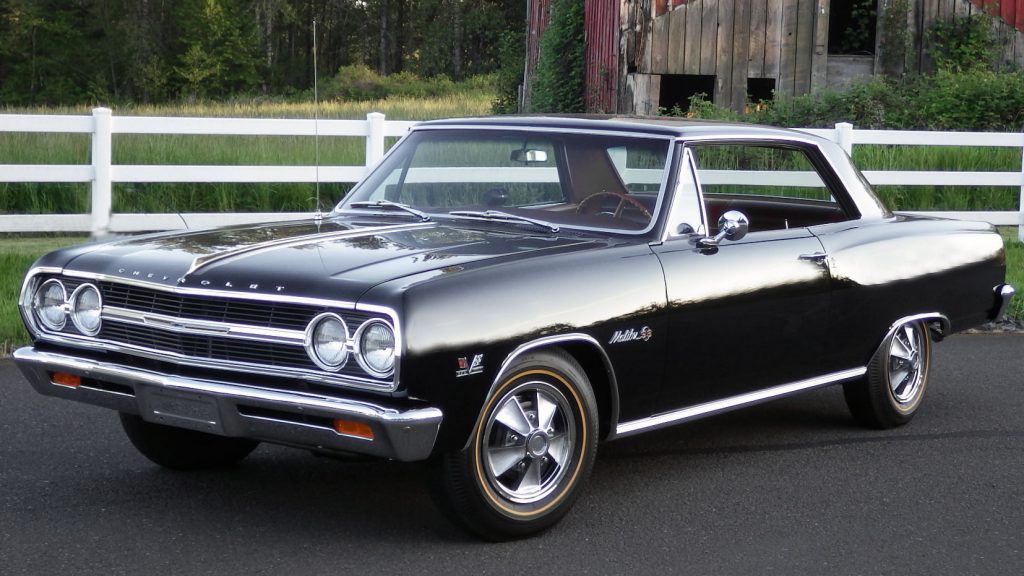
It’s hard to believe, but more than a year after the Pontiac GTO hit the street, Chevy still didn’t have a serious mid-size muscle car. Yes, there was an SS version of the Chevelle, but it was small-block powered and didn’t have the image of John DeLorean’s new creation. Chevy’s new Mark IV big-block, however, was finally ready for prime time and it was about the turn the Chevelle into a street legend.
The engine first appeared in the Corvette. Option code L78, which cost $292.70, got you the new 396 with a solid cam, aluminum intake manifold, and big port heads. Also available in the full-size Impala SS, it was rated 425 hp. Then, late in the model year, Chevy dropped a slightly detuned version into the Chevelle, creating its first true big-block muscle car.
Option code RPO Z16 was available on the Malibu SS. It cost $1501 and included a stronger boxed frame from the Chevelle convertible and the milder version of the 396, which was given the code L37. Its 11:1 compression ratio remained, but it got a milder hydraulic cam that dropped its peak power to 375 horses at 5600 rpm and 420 lb-ft at 3600 rpm.
That’s still 15 horsepower more than a tri-power 1965 GTO and 30 more than a 442, although the Oldsmobile’s 400 made 440 lb-ft of toque at a lower 3200 rpm. Chevy also made modifications to the rear suspension to control axle hop and fitted larger 11-inch front drum brakes.
Only 201 Z16s were built. Except for a single convertible, all were hardtops with M20 four-speeds and an open rear end with a 3.31 gear. Most were red, but Chevy also offered Tuxedo Black and Crocus Yellow. The cars were subtle, with a unique black and chrome trim panel, three small “396” emblems, and 14-inch fake mag-wheel-style hubcaps.
In July 1965, Motor Trend tested a Z16 and wrote, “Performance figures in our spec panel are extremely impressive, but they’re inadequate inasmuch as they don’t tell the story of how this car will accelerate over 100 mph. The needle doesn’t hang there but goes on wiping the face of the 160-mph speedo until the engine red-lines. With proper gearing, we wouldn’t be at all surprised to see the Chevelle 396 peg its speedometer.” Its quarter-mile time was a traction-limited 15.3 seconds.
Interestingly, Z16 was also the option code used in 1987 for the Monte Carlo SS Aerocoupe.
1967 Chevy Camaro Z/28
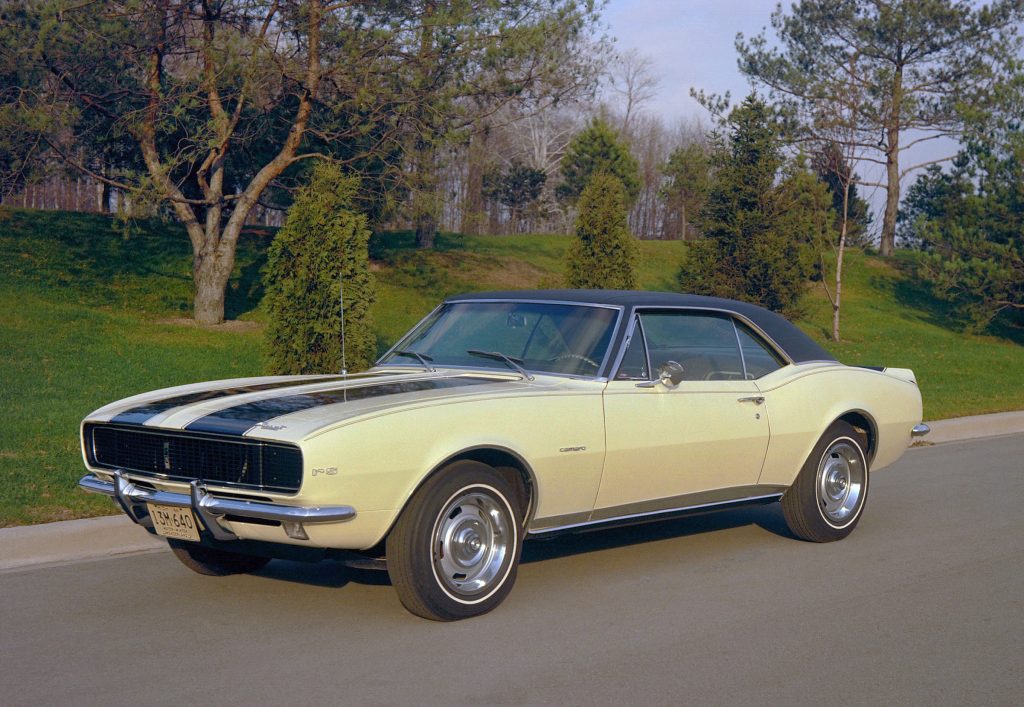
Z28 is the most famous random option code of all time; and we’re not just talking about Chevys. It’s arguably the most famous option code in the history of cars. (Certain model years wore Z/28 badges.)
It originated in 1967 to homologate the solid-lifter 302 and other hardware for the SCCA’s Trans Am series. Officially called the Special Performance Package, it included the 290-hp V-8, special suspension, heavy-duty radiator, quick ratio steering, 15×6 inch wheels, red stripe tires, close ratio four-speed, a 3.73 rear axle ratio, power brakes, and front disc brakes. It cost $358.
The cars also wore unique stripes over their hood and decklid but no Z/28 badging. But then Chevy did something no other car company had ever done before. It put the option code on the exterior of the car, adding Z/28 badges to the front fenders and taillight panel in 1968. Just 602 were built the first year, but as word got out production climbed to 7199 in 1968 and 20,302 in 1969. The SS model, option code Z27, was still more popular, but the Z28 legend had begun.
The Z28 code has come and gone over the years and the label has been worn by many different Camaros through the decades, some spectacular performance machines, some not so much. Today it’s a brand. Chevy even stopped using the official option code in 1977, and the most recent Camaro Z/28, the 7.0-liter, 505-hp track beast sold for the 2014 and ’15 model year, didn’t use it.
1969 Chevy Camaro and Corvette ZL1
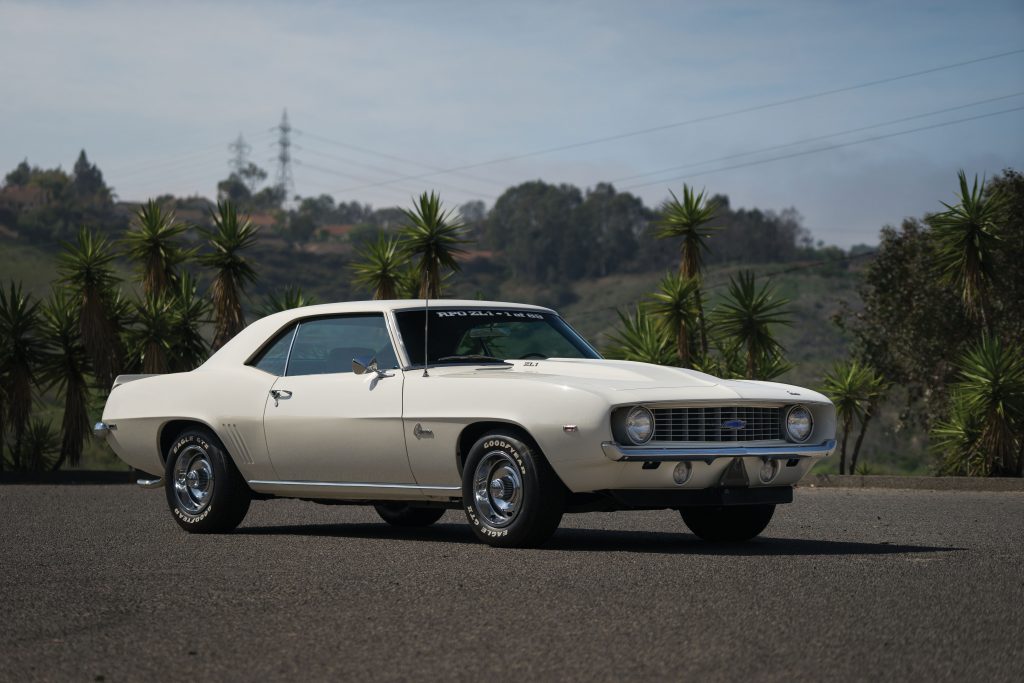
ZL1 wasn’t a regular production option on the Camaro in 1969. To get the all-aluminum big-block 427 you had to go through the Central Office Production Order system and Chevy would build you the meanest Camaro available to the public. Its official order number was COPO 9560. Just 69 were built.
Rated at a laughable 430 hp, the one-year only engine really made about 500 horses and weighed about the same as a small-block. It was essentially an L88 with an aluminum block and cost an astronomical $4160, when the L78 375-hp 396 ran an extra $316. With a 12.5:1 compression ratio, the ZL1s were supposed to become race cars—and most did find their way to the drag strips.
The ZL1 engine was an RPO on the Corvette, however. It was right there on the option sheet next to the L88. But it cost $3000, three times the price of the L88, and there weren’t many takers. Only two were built. They both survive today and are among the most valuable Corvettes ever produced.
Chevy brought back the ZL1 Camaro in 2012, powered by a supercharged LS V-8 producing 580 horsepower. This was the first ZL1 to wear exterior badging. Also supercharged, today’s 650-hp ZL1 is the quickest and most powerful Camaro ever.
1970 Chevy Corvette ZR1 and 1972 Corvette ZR2
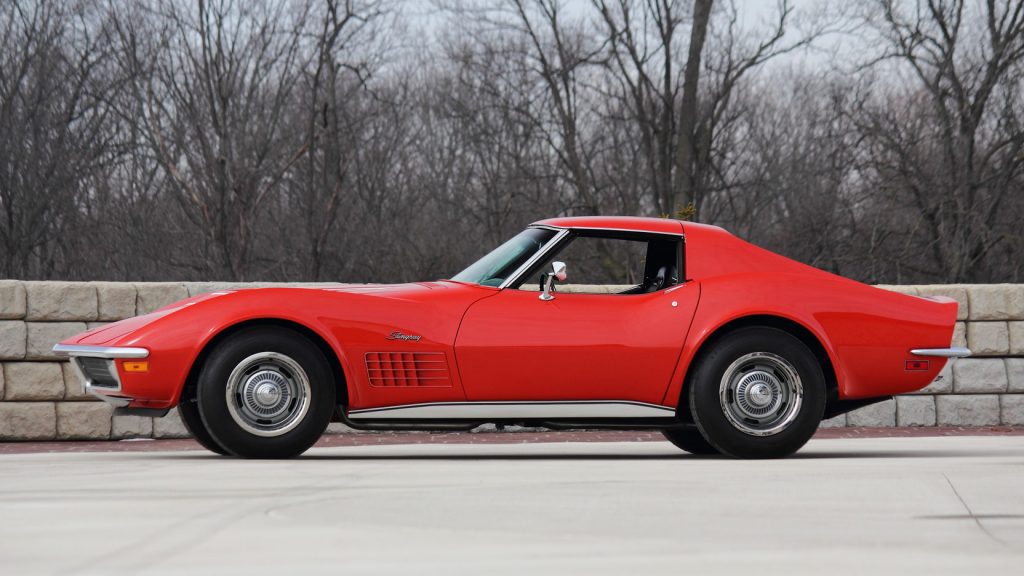
Last year, Chevy created the most powerful Corvette of all time, the supercharged 755-hp ZR1. It’s the fourth ZR1 Corvette since 1970. That year Chevy offered the Corvette with a special racing package, RPO ZR1 with the 370-hp LT-1 small-block and the Muncie M-22 rock-crusher four-speed. The following year it created the ZR2 with a 425-hp LS6 454 big-block. Although the ZR1 would last through 1972, the ZR2 was offered just one year.
Meant for racing, both packages added the stiffer F41 suspension, the J56 heavy-duty brake package, an aluminum radiator, and they could not be ordered with power accessories, air conditioning, or a radio. They were expensive—adding option code RPO ZR1 to a Corvette cost $1010, and the ZR2 package was $1747. Only 25 ZR1s were sold in 1970, while eight were sold in ’71 and 20 in ’72. Only 188 LS6 Corvettes were built in 1971 and only 12 got ZR2 package, including two convertibles. Today, surviving cars are worth high six figures and seldom change hands.
From 1990–95, Chevy reintroduced the Corvette ZR-1, now with a hyphen. The C4-generation ZR-1 Corvettes were powered by a 32-valve, 5.7-liter V-8 and remain the only Corvette ever sold with a double-overhead cam engine. These were also the first Corvettes to get ZR-1 badging. From 2009–13 the name returned again, this time with a supercharged LS and 600+ horsepower, but no hyphen.
The ZR2 label has never returned to the Corvette, but it moved over to Chevy’s small trucks. The ZR2 Package added a lifted suspension and other off-road equipment to the S-10 pickup starting in 1994 and Blazers in ’96. It has even appeared on the Chevy Tracker. Today, it’s the ultimate off-road version of the Chevy Colorado, with special shocks, a wider suspension, front and rear locking differentials, and other off-road goodness.








you forgot a few. you did say z code “cars” so I won’t ding you about the truck Zs but at the very least you forgot the beretta z26 and the cavalier z24. i think there are a couple others but I’m not sure. that’s why i came to this article: to find all the Zs.
I thought the z26 was the camaro rs in the 1st gen cars?
Also was the z24 anything more then just a number on the car with no performance meaning? Thought it was just a trim package of wheels and paint?
Again I could be wrong about this but I’m pretty sure about the z26 being the code for the camaro rs and I believe it was used again in the 80’s on a v6 berlinetta camaro?
You missed the 1967 chevy Z24 (SS427)(no impala anywhere on the car)